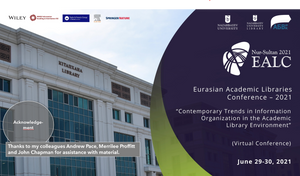

Technical user guides
How can we help, search results, filter by category.
If you still have questions or prefer to get help directly from an agent, please submit a request. We’ll get back to you as soon as possible.
- Hosting and installation
- Maintaining a healthy Pure
- Metrics in Pure
- Pure installation and upgrade guide (self-hosted customers only)
- Integrations
- Open access
- Web service
- Accessibility
- External authentication mechanisms
- Pure Portals
- Fingerprinting
- Custom-defined fields (CDFs)
- Pure architecture Modified Nov. 02, 2023
- Information on change to supported systems Modified Jan. 12, 2024
- Personal User Overview Modified Dec. 03, 2023
- Free, no Cost: Import Funding Opportunities to Pure on the topic of COVID Modified Jan. 04, 2024
- Custom URLs for Pure and the Pure Portal Modified Feb. 13, 2024
- How does backup, restore and data copy work in Pure? Modified Nov. 27, 2023
- SSH Tunnel from Pure server to Customer network Modified Nov. 27, 2023
- Pure hosting migration project outline Modified Mar. 07, 2024
- Extracting data from Pure Modified Jan. 11, 2024
- Available UI languages: Pure and Pure Portal Modified Feb. 13, 2024
- Pure migration tool (formerly 'PVA tool') Modified Mar. 06, 2024
- Custom URLs for hosting migrations Modified Feb. 07, 2024
- Planned system maintenance Modified Mar. 13, 2024
- Hosting and installation Modified Mar. 14, 2024
- Changing UI text and translations Modified Feb. 13, 2024
- Data validation and acceptance testing Modified Mar. 12, 2024
- Metrics overview Modified Feb. 09, 2024
- Article-level metrics Modified Nov. 30, 2023
- Journal-level metrics Modified Nov. 30, 2023
- Publisher-level metrics Modified Nov. 30, 2023
- Person-level metrics Modified Nov. 30, 2023
- Metrics-related configurations Modified Nov. 30, 2023
- SciVal metric Modified Mar. 19, 2024
- Scopus metrics Modified Mar. 19, 2024
- Article level metrics from WoS Modified Mar. 20, 2024
- PlumX metrics Modified Mar. 20, 2024
- Altmetrics Modified Mar. 20, 2024
- Fractional count Modified Mar. 20, 2024
- Journal level metrics from Scopus Modified Mar. 20, 2024
- Journal metrics from Web of Science Modified Mar. 20, 2024
- Local metrics (Journal ratings) Modified Mar. 20, 2024
- Journal metrics for assessments Modified Mar. 20, 2024
- Local ratings (Publisher) Modified Mar. 20, 2024
- Publisher metrics for assessment Modified Mar. 20, 2024
- PlumX H-index Modified Mar. 20, 2024
- SciVal H-index Modified Mar. 20, 2024
- Scopus h-index Modified Mar. 20, 2024
- WoS H-index Modified Mar. 20, 2024
- Pure requirements Modified Nov. 28, 2023
- End of support announcements for Pure Modified Nov. 29, 2023
- Installing Pure on Linux Modified Mar. 20, 2024
- Manual Pure deployment on Linux Modified Nov. 28, 2023
- Installing Pure on Windows Modified Jan. 04, 2024
- Manual Pure Deployment on Windows Modified Nov. 28, 2023
- Pure database URL Modified Jan. 04, 2024
- Pure maintenance mode (Installation) Modified Jan. 04, 2024
- Development, Test, or Production mode Modified Nov. 28, 2023
- Handle.net Modified Dec. 27, 2023
- Pure email Modified Nov. 28, 2023
- Jobs Modified Dec. 19, 2023
- Pure Mount points Modified Nov. 28, 2023
- Reverse proxy Modified Nov. 28, 2023
- Security guide Modified Nov. 28, 2023
- Split up Pure webapps on more than one Tomcat Modified Jan. 03, 2024
- Antivirus integration: self-hosted customers Modified Nov. 28, 2023
- Content status Modified Nov. 28, 2023
- Storage Modified Jan. 03, 2024
- File storage Modified Jan. 04, 2024
- Amazon S3 Modified Nov. 28, 2023
- DSpace Modified Nov. 28, 2023
- Eprints Modified Nov. 28, 2023
- Local file system Modified Nov. 28, 2023
- MODS Dataset field mapping Modified Nov. 28, 2023
- MODS Publication field mapping Modified Nov. 28, 2023
- MODS Publication type mapping Modified Jan. 16, 2024
- Repository integration guide Modified Jan. 04, 2024
- Storage status Modified Nov. 28, 2023
- System currency, country & time zone Modified Nov. 28, 2023
- Tomcat command-line parameters Modified Nov. 28, 2023
- Tomcat Logrotation Modified Nov. 28, 2023
- Upgrading Pure Modified Nov. 28, 2023
- Pure maintenance mode (upgrade) Modified Nov. 28, 2023
- Pure Backup Modified Dec. 11, 2023
- Monitor Pure Modified Nov. 28, 2023
- Setup Pure Test server Modified Nov. 28, 2023
- Copy data from Production Modified Jan. 03, 2024
- Request Pure distribution file Modified Nov. 28, 2023
- General synchronisation information Modified Dec. 14, 2023
- Content Type XML Documentation Modified Dec. 07, 2023
- Import sources Modified Dec. 14, 2023
- Wiseflow Modified Dec. 14, 2023
- Open access in Pure Modified Feb. 05, 2024
- General introduction to Open Access Modified Nov. 30, 2023
- Open Access icon in Pure Modified Jan. 03, 2024
- How to determine OA status in Pure: a matrix view Modified Mar. 07, 2024
- Logic description Modified Nov. 30, 2023
- Open Access guidance section Modified Dec. 01, 2023
- Document licence information Modified Dec. 01, 2023
- Electronic version(s) of Research Output Modified Dec. 01, 2023
- Article Processing Charge Modified Dec. 01, 2023
- Open Access overview screen, filters and tasks Modified Dec. 01, 2023
- OA-relevant import sources Modified Dec. 01, 2023
- Article-level Sources Modified Feb. 06, 2024
- Journal-level Sources Modified Feb. 06, 2024
- Open data and Pure Modified Dec. 04, 2023
- Registering datasets at DataCite Modified Feb. 06, 2024
- Integration with Data Monitor Modified Feb. 06, 2024
- OA-related jobs in Pure Modified Dec. 05, 2023
- Open Access roles and rights overview Modified Dec. 05, 2023
- Open Access on Pure Portal Modified Dec. 05, 2023
- OA-related report definitions Modified Dec. 05, 2023
- Open Access related release notes Modified Feb. 05, 2024
- Inspiration Modified Nov. 27, 2023
- Resource catalog / Roadmap Modified Mar. 08, 2024
- How to get started with the API Modified Jan. 04, 2024
- API keys Modified Jan. 30, 2024
- Authorization Modified Feb. 20, 2024
- Users and roles Modified Nov. 27, 2023
- Files Modified Nov. 27, 2023
- Pure API - Metrics Modified Nov. 27, 2023
- Pure API - Custom-defined fields Modified Nov. 27, 2023
- Write API vs XML Synchronisation Modified Jan. 04, 2024
- Synchronization workaround Modified Nov. 27, 2023
- Working with research-output types (and sub-types in general) Modified Nov. 27, 2023
- Pure API - Getting data in and out of Pure Modified Nov. 27, 2023
- Pure API user guide Modified Nov. 27, 2023
- Pure API Home Modified Mar. 21, 2024
- CERIF XML mapping Modified Dec. 27, 2023
- Harvesting content from the Pure web services (changes) Modified Nov. 29, 2023
- Fingerprint WebService Extraction Tool Modified Nov. 29, 2023
- Web service security settings Modified Nov. 29, 2023
- Content filtering with filters Modified Nov. 29, 2023
- Pure OAI interface Modified Nov. 29, 2023
- OAI mapping configurations Modified Nov. 29, 2023
- Pure Accessibility Modified Nov. 29, 2023
- External authentication mechanisms Modified Nov. 27, 2023
- accessSAML2 (WAYF, Shibboleth, ADFS) Modified Feb. 29, 2024
- Request header based authentication Modified Nov. 27, 2023
- Request remote user based authentication Modified Nov. 27, 2023
- Static user authentication Modified Nov. 27, 2023
- Basic authentication Modified Nov. 27, 2023
- Google Authentication Modified Nov. 27, 2023
- SURFconext ID mgmt. service in Pure [NL] - setup guide Modified Nov. 27, 2023
- SURFconext key rollover Modified Dec. 12, 2023
- Normal Pure login Modified Mar. 11, 2024
- Elsevier Authentication Modified Nov. 27, 2023
- Pure Portal configuration Modified Jan. 04, 2024
- Managing Collaboration Map, Network Graph and Collaborations section on the Pure Portal Modified Dec. 20, 2023
- Managing text descriptions that appear on the Profile pages Modified Dec. 20, 2023
- Pure Portal Search Engine Optimization (SEO) Modified Jan. 04, 2024
- Portal search: Concept vs. Free Text Search Modified Dec. 14, 2023
- Organisation Portal page Modified Dec. 20, 2023
- Person portal page Modified Jan. 10, 2024
- Fields on Pure portal: Book/report Modified Dec. 20, 2023
- Fields on Pure portal: Chapter in Book/Report/Conference proceeding Modified Dec. 20, 2023
- Fields on Pure portal: Contribution to conference Modified Dec. 20, 2023
- Fields on Pure portal: Contribution to Journal Modified Dec. 20, 2023
- Fields on Pure portal: Contribution to memorandum/exposition Modified Dec. 20, 2023
- Fields on Pure portal: Contribution to specialist publication Modified Dec. 20, 2023
- Fields on Pure portal: Memorandum/exposition Modified Dec. 20, 2023
- Fields on Pure portal: Non-textual form Modified Dec. 20, 2023
- Fields on Pure portal: Other publication Modified Dec. 20, 2023
- Fields on Pure portal: Patent Modified Dec. 20, 2023
- Fields on Pure portal: Thesis Modified Dec. 20, 2023
- Fields on Pure portal: Working paper Modified Dec. 20, 2023
- Fingerprinting - Core Principles Modified Feb. 26, 2024
- Automatic deduplication job Modified Feb. 21, 2024
- Custom-defined fields (CDFs) Modified Dec. 14, 2023
- Sub-categories:
- Synchronizations
- Import sources
- Setting up online sources Modified Feb. 06, 2024
- Mapping of data from import sources Modified Dec. 14, 2023
- Arto Modified Dec. 15, 2023
- ArXiv Modified Dec. 15, 2023
- Bibliotek.dk Modified Dec. 15, 2023
- BioArxiv Modified Feb. 21, 2024
- CabAbstract Modified Dec. 15, 2023
- CORE Modified Dec. 15, 2023
- CrossRef Modified Dec. 15, 2023
- Data Monitor Modified Dec. 15, 2023
- Data Monitor onboarding Modified Dec. 15, 2023
- DBLP Modified Dec. 15, 2023
- Digital Commons Modified Dec. 15, 2023
- Embase Modified Dec. 15, 2023
- Fennica Modified Dec. 15, 2023
- IEEE Modified Dec. 15, 2023
- JISC Publication Router Modified Dec. 15, 2023
- PubMed Modified Dec. 15, 2023
- ResearchMap Modified Dec. 15, 2023
- Scielo Modified Dec. 15, 2023
- MedArxiv Modified Dec. 15, 2023
- ORCID Modified Feb. 26, 2024
- ORCID Integration Modified Dec. 15, 2023
- The Difference between "Export affiliation to ORCID" and "Export detailed affiliations" Modified Dec. 15, 2023
- Using ROR Id VS Using Ringgold Id Modified Dec. 15, 2023
- Scopus Modified Dec. 15, 2023
- Scopus as self import source Modified Mar. 12, 2024
- SSRN Modified Dec. 15, 2023
- Unpaywall Modified Dec. 15, 2023
- WorldCat Modified Dec. 15, 2023
- Web of Science Modified Dec. 15, 2023
- Cinii Modified Dec. 15, 2023
- OAI-PMH formats Modified Dec. 14, 2023
- Synchronisation Non-explicit Id Matching Modified Nov. 27, 2023
- Synchronisation Non-explicit Id Hints Modified Nov. 27, 2023
- How to find classification values for the synchronisations Modified Nov. 27, 2023
- Securing access to a synchronization source Modified Jan. 04, 2024
- Pure API or XML synchronization? Modified Dec. 14, 2023
- Master Data XML Modified Dec. 14, 2023
- Editor Content Types XML Modified Dec. 27, 2023
- UPM & Award Management XML Modified Dec. 14, 2023
- Commons XML Modified Dec. 27, 2023
- Project XML Modified Mar. 18, 2024
- Configurable Person Synchronisation Modified Dec. 04, 2023
- SQL validation for views Modified Dec. 04, 2023
- Datatype to database mappings Modified Dec. 04, 2023
- Multiple submission language support in DB synchronisations Modified Nov. 27, 2023
- Organisation synchronisation (Views) Modified Nov. 27, 2023
- Project model synchronisation Modified Nov. 27, 2023
- Applications synchronisation (Views) Modified Nov. 27, 2023
- Award synchronisation (Views) Modified Nov. 27, 2023
- Project synchronisation (Views) Modified Nov. 27, 2023
- Award Budget & Expenditure Synchronisation (Views) Modified Nov. 27, 2023
- Student thesis Synchronisation - Views Modified Nov. 27, 2023
- Synchronisation - Migrating from old to unified synchronisation Modified Dec. 04, 2023
- Unified Person Synchronisation - Views Modified Jan. 29, 2024
- Honorary Staff Organisation Relation Modified Nov. 27, 2023
- Staff Organisation Relation Modified Nov. 27, 2023
- Student Organisation Relation Modified Mar. 18, 2024
- Visiting Scholar Organisation Relation Modified Nov. 27, 2023
- Rules for relationship ID generation during Synchronisation Modified Mar. 12, 2024
- Unified Supervisor Synchronisation - Views Modified Jan. 26, 2024
- Unified User Synchronisation - Views Modified Dec. 04, 2023
- Learning Mall
- Undergraduate
- Short, Summer Courses
- Executive Education & Professional Development
- International Mobility
- Why study at XJTLU
- Chinese Mainland
- Entry Requirements
- How to Apply
- Fees & Scholarship
- China's Hong Kong, Macao, & Taiwan
- International
- Programme Fees
- Postgraduate Research Scholarships
- Visa Information for International Students
- Pre-Arrival Information for International Students
- Key Research Areas
- Research Strategy
- Research Innovation
- Research Publications
- Research Projects
- Centres, Labs & Schools
- Academy of Film and Creative Technology
- Academy of Future Education
- XJTLU-JITRI Academy of Industrial Technology
- XJTLU Wisdom Lake Academy of Pharmacy
- School of Advanced Technology
- Design School
- School of Humanities and Social Sciences
- International Business School Suzhou
- School of Languages
- School of Mathematics and Physics
- School of Science
- Chinese Cultural Teaching Centre
- Physical Education Centre
- School of AI and Advanced Computing
- School of CHIPS
- School of Cultural Technology
- Entrepreneurship and Enterprise Hub
- School of Intelligent Finance and Business
- School of Intelligent Manufacturing Ecosystem
- School of Internet of Things
- School of Robotics
- HeXie Academy
- Digital Transformation Research Centre
- Industrial Software Ecosystem Research Centre
- Strategic Issues of Industrial Innovation & Development Research Centre
- Test Centres
- Health & Wellbeing
- Sports and Club Activities
- Accommodation
- Life in Suzhou
- Vision and Mission
- Partnership
- Higher Education in China
- Associate Vice Presidents & Deans
- Previous Senior Staff
- Jobs & Careers
- Policies & Regulations
- Professional Services
- Meta Education
- Brand Resources
- Publications

Fourth MEGA International Creative Media Festival seeks submissions
March 14, 2024

Choosing a degree programme? Follow your interests to find the right path
March 15, 2024
Quick Links
- Undergraduate Programmes

Research Output Management System
PURE is a web-based system developed by Elsevier (the vendor of the Scopus database). The system provides an online platform that facilitates and supports researchers and academic units in XJTLU to collect information on research output and activities.
For researchers, PURE automatically harvests researcher-related publication data from online publication databases (Scopus and Web of Science database) according to the researcher’s profile information in PURE. PURE pushes these publication data to researchers for further verification and complement.
For academic units, PURE serves as a tool to extract data on overall research outputs and activities, which can facilitate the generation of performance reports and general research management.
PURE provides a broad picture of research output and activity at the individual, Department, School/Academy, and University levels.
▶Click Here For More Details https://scholar.xjtlu.edu.cn/

- Schools & departments

Pure is the University's Current Research Information System ( CRIS ). Information held in Pure relates to research staff and their publications, projects and activities information. Pure allows for relationships and associations to be created between research inputs and outputs, providing a broad picture of research activity at the individual, research unit, School, College, and University levels.
Log in to Pure

Access to Pure and requesting an ERE profile
Edit your research profile on Pure
Edinburgh Research Explorer
Edinburgh Research Explorer ( ERE ) is a non-editable web portal that provides a public view of the University's research activity. All the information that is displayed on the ERE is added and edited in Pure. Units are also able to access data held in Pure to feed information into their own local web presence, such as publication lists and staff profiles.
Visit Edinburgh Research Explorer

Your research profile

Add new content
Guidance material on adding new content in Pure

Highlight/Visibility
Highlight your Pure content

Fix your content
Support for fixing errors in your content

Import your content
Import your content into Pure from a range of sources

Postgraduate students
Students' records and roles in Pure

Frequently asked questions from Pure users
Professional Services Staff
Guidance for professional services staff whose remit includes the population and validation of content in Pure is available on the Pure User Group SharePoint site . You will need to log in to Office 365 to access the SharePoint site.
Please contact us at [email protected] if you would like to gain access to the Pure User Group SharePoint site.
Developer access to the Pure web services is strictly controlled to ensure that any usage does not adversely impact on the performance of the Pure system. Please note that all requests for access will be reviewed on a case by case basis. We also reserve the right to withdraw access to web services at any time in the event that IS Applications management and/or Pure support team consider that their continued use is having an adverse effect on system performance.
In the first instance, please contact Pure support specifying the nature of work you are looking to do. You will be given access to test environment only at this stage. After your test has been successfully completed, please get in touch with Pure support again to request access to dev and/or live environments.

Research information management systems: a new service category?
RIM is supported by a particular system category, the Research Information Management System (RIMs), sometimes referred to by an earlier name, the CRIS (Current Research Information System).
For reasons discussed below, this area has been more prominent outside the US, but interest is also now growing in the US. See for example, the mention of RIMs in the Library FY15 Strategic Goals at Dartmouth College.
Research information management
The name is unfortunately confusing – a reserved sense living alongside more general senses. What is the reserved sense? Broadly, RIM is used to refer to the integrated management of information about the research life-cycle, and about the entities which are party to it (e.g. researchers, research outputs, organizations, grants, facilities, ..). The aim is to synchronize data across parts of the university, reducing the burden to all involved of collecting and managing data about the research process. An outcome is to provide greater visibility onto institutional research activity. Motivations include better internal reporting and analytics, support for compliance and assessment, and improved reputation management through more organized disclosure of research expertise and outputs.
A major driver has been the need to streamline the provision of data to various national university research assessment exercises (for example, in the UK, Denmark and Australia). Without integrated support, responding to these is costly, with activities fragmented across the Office of Research, individual schools or departments, and other support units, including, sometimes, the library. (See this report on national assessment regimes and the roles of libraries.)
Some of the functional areas covered by a RIM system may be:
- Award management and identification of award opportunities . Matching of interests to potential funding sources. Supporting management of and communication around grant and contracts activity.
- Publications management . Collecting data about researcher publications. Often this will be done by searching in external sources (Scopus and Web of Science, for example) to help populate profiles, and to provide alerts to keep them up to date.
- Coordination and publishing of expertise profiles . Centralized upkeep of expertise profiles. Pulling of data from various systems. This may be for internal reporting or assessment purposes, to support individual researchers in providing personal data in a variety of required forms (e.g. for different granting agencies), and for publishing to the web through an institutional research portal or other venue.
- Research analytics/reporting . Providing management information about research activity and interests, across departments, groups and individuals.
- Compliance with internal/external mandates .
- Support of open access . Synchronization with institutional repository. Managing deposit requirements. Integration with sources of information about Open Access policies.
To meet these goals, a RIM system will integrate data from a variety of internal and external systems. Typically, a university will currently manage information about these processes across a variety of administrative and academic departments. Required data also has to be pulled from external systems, notably data about funding opportunities and publications.
Several products have emerged specifically to support RIM in recent years. This is an important reason for suggesting that it is emerging as a recognized service category.
- Pure (Elsevier). “Pure aggregates your organization’s research information from numerous internal and external sources, and ensures the data that drives your strategic decisions is trusted, comprehensive and accessible in real time. A highly versatile system, Pure enables your organization to build reports, carry out performance assessments, manage researcher profiles, enable expertise identification and more, all while reducing administrative burden for researchers, faculty and staff.” [ Pure ]
- Converis (Thomson Reuters). “Converis is the only fully configurable research information management system that can manage the complete research lifecycle, from the earliest due diligence in the grant process through the final publication and application of research results. With Converis, understand the full scope of your organization’s contributions by building scholarly profiles based on our publishing and citations data–then layer in your institutional data to more specifically track success within your organization.” [ Converis ]
- Symplectic Elements . “A driving force of our approach is to minimise the administrative burden placed on academic staff during their research. We work with our clients to provide industry leading software services and integrations that automate the capture, reduce the manual input, improve the quality and expedite the transfer of rich data at their institution.”[ Symplectic ]
Pure and Converis are parts of broader sets of research management and analytics services from, respectively, Elsevier ( Elsevier research intelligence ) and Thomson Reuters ( Research management and evaluation ). Each is a recent acquisition, providing an institutional approach alongside the aggregate, network level approach of each company’s broader research analytics and management services. Symplectic is a member of the very interesting Digital Science portfolio. Digital Science is a company set up by Macmillan Publishers to incubate start-ups focused on scientific workflow and research productivity. These include, for example, Figshare and Altmetric .
Other products are also relevant here. As RIM is an emerging area, it is natural to expect some overlap with other functions. For example, there is definitely overlap with backoffice research administration systems – Ideate from Consilience or solutions from infoEd Global , for example. And also with more publicly oriented profiling and expertise systems on the front office side.
With respect to the latter, Pure and Symplectic both note that they can interface to VIVO . Furthermore, Symplectic can provide “VIVO services that cover installation, support, hosting and integration for institutions looking to join the VIVO network”. It also provides implementation support for the Profiles Research Networking Software .
As I discuss further below, one interesting question for libraries is the relationship between the RIMs or CRIS and the institutional repository. Extensions have been written for both Dspace and Eprints to provide some RIMs-like support. For example, Dspace-Cris extends the Dspace model to cater for the Cerif entities. This is based on work done for the Scholar’s Hub at Hong Kong University.
It is also interesting to note that none of the three open source educational community organizations – Kuali, The Duraspace Foundation, or The Apereo Foundation – has a directly comparable offering, although there are some adjacent activities. In particular, Kuali Coeus for Research Administration is “a comprehensive system to manage the complexities of research administration needs from the faculty researcher through grants administration to federal funding agencies”, based on work at MIT. Duraspace is now the organizational home for VIVO.
Finally, there are some national approaches to providing RIMs or CRIS functionality, associated with a national view of research outputs. This is the case in South Africa , Norway and The Netherlands , for example.
Another signal that this is an emerging service category is the existence of active standards activities. Two are especially relevant here: CERIF (Common European Research Information Format) from EuroCRIS, which provides a format for exchange of data between RIM systems, and the Casrai dictionary . CASRAI is the Consortia Advancing Standards in Research Administration Information .
So, what about research information management (in this reserved sense) and libraries? One of the interesting things to happen in recent years is that a variety of other campus players are developing service agendas around digital information management that may overlap with library interests. This has happened with IT, learning and teaching support, and with the University press, for example. This coincides with another trend, the growing interest in tracking, managing and disclosing the research and learning outputs of the institution: research data, learning materials, expertise profiles, research reports and papers, and so on. The convergence of these two trends means that the library now has shared interests with the Office of Research, as well as with other campus partners. As both the local institutional and public science policy interest in university outputs grows, this will become a more important area, and the library will increasingly be a partner. Research Information Management is a part of a slowly emerging view of how institutional digital materials will be managed more holistically, with a clear connection to researcher identity.
As noted above, this interest has been more pronounced outside the US to date, but will I think become a more general interest in coming years. It will also become of more general interest to libraries. Here are some contact points.
- The institutional repository boundary. It is acknowledged that Institutional Repositories (IRs) have been a mixed success. One reason for this is that they are to one side of researcher workflows, and not necessarily aligned with researcher incentives. Although also an additional administrative overhead, Research Information Management is better aligned with organizational and external incentives. See for example this presentation (from Royal Holloway, U of London) which notes that faculty are more interested in the CRIS than they had been in the IR, ‘because it does more for them’. It also notes that the library no longer talks about the ‘repository’ but about updating profiles and loading full-text. There is a clear intersection between RIMs and the institutional repository and the boundary may be managed in different ways. Hong Kong University, for example, has evolved its institutional repository to include RIMs or CRIS features. Look at the publications or presentations of David Palmer, who has led this development, for more detail. There is a strong focus here on improved reputation management on the web through effective disclosure of researcher profiles and outputs. Movement in the other direction has also occurred, where a RIMs or CRIS is used to support IR-like services. Quite often, however, the RIMs and IR are working as part of an integrated workflow, as described here .
- Management and disclosure of research outputs and expertise. There is a growing interest in researcher and research profiles, and the RIMs may support the creation and management of a ‘research portal’ on campus. An important part of this is assisting researchers to more easily manager their profiles, including prompting with new publications from searches of external sources. See the research portal at Queen’s University Belfast for an example of a site supported by Pure. Related to this is general awareness about promotion, effective publishing, bibliometrics, and management of online research identity. Some libraries are supporting the assignment of ORCIDs. The presentations of Wouter Gerritsma, of Wageningen University in The Netherlands, provide useful pointers and experiences.
- Compliance with mandates/reporting . The role of RIMs in supporting research assessment regimes in various countries was mentioned earlier: without such workflow support, participation was expensive and inefficient. Similar issues are arising as compliance to institutional or national mandates needs to be managed. Earlier this year, the California Digital Library announced that it had contracted with Symplectic “to implement a publication harvesting system in support of the UC Open Access Policy”. US Universities are now considering the impact of the OSTP memo “Increasing Access to the Results of Federally Funded Scientific Research,” [ PDF ] which directs funding agencies with an annual R&D budget over $100 million to develop a public access plan for disseminating the results of their research. ICPSR summarises the memo and its implications here . It is not yet clear how this will be implemented, but it is an example of the growing science and research policy interest in the organized disclosure of information about, and access to, the outputs of publicly funded research. This drives a University wide interest in research information management. In this context, SHARE may provide some focus for greater RIM awareness.
- Management of institutional digital materials. I suggest above that RIM is one strand of the growing campus interest in managing institutional materials – research data, video, expertise profiles, and so on. Clearly, the relationship between research information management, whatever becomes of the institutional repository, and the management of research data is close. This is especially the case in the US, given the inclusion of research data within the scope of the OSTP memo. The library provides a natural institutional partner and potential home for some of this activity, and also expertise in what Arlitsch and colleagues call ‘new knowledge work’, thinking about the identifiers and markup that the web expects.
Whether or not Research Information Management become a new service category in the US in quite the way I have discussed it here, it is clear the issues raised will provide important opportunities for libraries to become further involved in supporting the research life of the university.
Picture: The feature picture is a screenshot of the public face of the research information management system at the University of Bath. I worked at Bath for several years, and a colleague kindly populated with RIM with some of my publications after I left.
Note: I made some cosmetic updates on 4 March 2021 on transition to the new platform, to include adding a feature picture and headings. I resisted the temptation to update it as quite a bit has happened in intervening years. It has been cited quite a few times as an introduction to the topic. Work by colleagues at OCLC Research has done much to advance the RIM agenda in the US and elsewhere.
Generative AI and libraries: seven contexts

The technology career ladder

Presentation: Two Metadata Directions
Lorcan Dempsey dot Net
The social, cultural and technological contexts of libraries, services and networks
Sign in / up
Great! You’ve successfully signed up.
Welcome back! You've successfully signed in.
You've successfully subscribed to LorcanDempsey.net.
Your link has expired.
Success! Check your email for magic link to sign-in.
Success! Your billing info has been updated.
Your billing was not updated.

Staff Services

- Business units
- News & events
- Directories
People & culture
Research support, learning & teaching, campus environment, information technology, marketing & outreach, financial management, planning & governance.

- Respect & inclusion
- Salaries & benefits
- Training & development
- Health & safety
- ANU Vice-Chancellor's Awards
- ANU Chancellor’s Awards
- Business travel
- Academic promotions
- Enterprise agreement
- Transition & leaving
- Funding opportunities
- Fellowships & support
- Ethics & integrity
- Research contracts
- Reporting & publications
- Research systems
- Costing & pricing
- Partner Engagement and Commercialisation
- Tools & resources
- Communities & training
- HDR supervision development
- Teaching support
- NECTAR mentoring program
- Awards & grants
- Academic integrity
- Education data
- Global programs
- Student administration
- Supporting students
- Facilities & maps
- Building management
- Transport & parking
- Safety & security
- Venues & functions
- Accommodation
- Sustainability & environment
- Campus development
- Login & access
- Print, copy, scan
- Information security
Pure research management
- Teaching space list
- Infrastructure
- ANU Service Desk community support request form
- IT management
- ANU identity
- Digital communication
- Media engagement
- Storytelling & writing
- Events & VIP visits
- Merchandise & uniforms
- International engagements
- Ledger integrity
- Investments
- Research Financial Advisory
- Transactional services
- Procurement & contracts
- Purchase cards
- Financial frameworks
- Planning & review
- Performance measurement
- Project management framework
- Current projects
- Service improvement
- Legal services
- Risk & audit
- Recordkeeping
- Search ANU web, staff & maps
- Search current site content
Help you with all aspects of your employment including conditions, pay and other benefits, training, and wellbeing.
- Supporting development
- Achieve & recognise
Information about research, publishing, funding, and supervision.
Information about teaching & learning, student administration and student services.
- Professional development
Information about ANU buildings, rooms, gardens, car parks, roads and more.
Technical services and infrastructure that support teaching, learning, research and administration.
- Software & systems
- Learning space technology
- Help & support
Supporting public lectures and events, media and publications, advertising, marketing, branding and more.
Get help with financial management and administration including purchase cards.
Information relating to strategic planning and management of University business.
You are here
Business owner: Office of Research and Innovation Services
This system will be replaced by the new Research Portal Plus which is a University-wide roll out of the researchers portal and publication management system based on Elsevier Pure product suite. The Research Portal Plus implementation is scheduled to complete later in 2024. For further information please contact [email protected] Pure is a research management system. As a joint project between the College of Asia & the Pacific (CAP), Research Services Division (RSD), and Information Technology Services (ITS). CAP is piloting the Researcher Portal module of Pure which went live on 10th May 2021. View Researcher Profiles Website View the Pure Support SharePoint Site
Support contact
- Contact ANU
- Freedom of Information
+61 2 6125 5111 The Australian National University, Canberra TEQSA Provider ID: PRV12002 (Australian University) CRICOS Provider : 00120C ABN : 52 234 063 906

- Help & FAQ
Welcome to University of South Wales' Research Explorer
- concept Search across key concepts extracted from titles and abstracts
- matching text Search across indexed text content in Pure, such as names, titles, descriptions etc.
Welcome to the University of South Wales Research Explorer.
Un sustainable development goals.
In September 2015, 193 countries agreed to adopt a set of global goals to end poverty, protect the planet and ensure prosperity for all. Click on a goal to the right to explore how our researchers and their work are contributing towards achieving it.
- 21 Research output
- 1 Research units
- 34 Research output
- 34 Profiles
- 3 Research units
- 1008 Research output
- 62 Research output
- 113 Research output
- 6 Research output
- 303 Research output
- 2 Research units
- 137 Research output
- 55 Research output
- 15 Profiles
- 76 Research output
- 115 Research output
- 10 Profiles
- 110 Research output
- 66 Research output
- 54 Research output
- 31 Profiles
- 871 Research output
Collaborations and top research areas from the last five years
Click dots and donuts to bring up details or Select a country/territory from the list
Dive into details
Select a country/territory to view shared publications and projects
- Name (descending)
Search results
Faculty of business and creative industries.
Organisational unit : Faculty
Faculty of Computing, Engineering and Science
Faculty of life sciences and education.
- Skip to content
- Skip to navigation

Pure and simple: get to know the new Research Management System

Over the coming weeks, we will be featuring some of the systems that will form Macquarie University’s new Research Hub and how they support different aspects of research management across the University.
What is the Pure Research Management System?
It is one of the many systems that will be part of Macquarie’s new Research Hub
The system will be used by researchers or research administrators to create a public profile, track and manage published research, apply for funding, process awards, record research outputs, prizes and other activities and create CVs for showcasing on the Macquarie University Research Portal .
The Information Technology (IT) department at Macquarie University regularly reviews its infrastructure and systems to ensure alignment to priorities in A Framing of Futures . A new Research Management System was a priority because of the new and exciting research performance targets set by the University.
The University chose the Pure system as one of the many systems to support the delivery of the Research Hub . Many institutions in Europe, the US and Australia use this system to support researchers’ publications, applications and awards data and to facilitate reporting across our research community, aligning research information management to contemporary practices.
Upon completion of the Research Hub in 2018, Macquarie will have a centralised Research Information Management System resulting in the following benefits:
- a single unified source of research information that connects all of the University’s faculties, research centres, clinics and the hospital on a single platform making it easier to understand the full scope of University research activity
- a useful tool for understanding existing research expertise at the University to assist in finding research collaborators and supervisors
- increased international visibility which helps the University attract high-profile collaboration opportunities
- research data that allow the University to make data-driven strategic decisions
- greater transparency of funding applications during the approval process
- more streamlined information to meet the policy requirements of grant funding bodies such as the Australian Research Council (ARC) and the National Health and Medical Research Council (NHMRC)
- integration of additional component systems in the Research Hub including systems to support intellectual property and commercialisation, animal and human ethics, biosafety management, contracts and legal and online forms.
Research Publications
Over 100,000 publications were imported into the system which created the foundation of data that populated the system. Best practice review has confirmed that we have possibly the best repository of research publication data across the approximately 200 universities that are using the Pure system around the world.
Why are research publications so important to Macquarie University?
The Research Portal offers the ability to showcase Macquarie University’s outstanding research and one of the outputs showcased are publications.
Having an accurate record of publications authored by the University community enables confident and high-quality reporting to Government and funders and enables researchers to be able to showcase their research efficiently. It also helps with the discovery of research undertaken at the University, which can assist in attracting new connections and collaborations with researchers around the world. Making publications openly accessible for download (Open Access) increases the impact of Macquarie’s research on wider audiences and helps increase citation rates for our researchers.
What is the Library’s involvement?
The Library is working to ensure that the data quality of Macquarie University’s publication records is of the highest standard and facilitates the discoverability of all publications authored by staff and students at our University.
Researchers are now able to add or import their own publications into the system and as part of that process, attach the author manuscript (version of paper after peer review, as it was accepted for publishing by the journal) to the publication record in the system. Adding the author manuscript enables the Library to make research publications Open Access as allowed by publishers’ policies, so this step is very important.
The system also enables authors to link their publications to the grants that helped fund them and thus meet funder requirements. The applications and award functionality will go-live in the system over the coming weeks.

Leave a Reply Cancel reply
Required fields are marked *
First name *
Last name *
We encourage active and constructive debate through our comments section, but please remain respectful. Your first and last name will be published alongside your comment.
Comments will not be pre-moderated but any comments deemed to be offensive, obscene, intimidating, discriminatory or defamatory will be removed and further action may be taken where such conduct breaches University policy or standards. Please keep in mind that This Week is a public site and comments should not contain information that is confidential or commercial in confidence.
Other stories you might be interested in
- Unearthing Greece’s rich past: An archaeological journey in 2023
- Researchers’ IMPACT Pitch Final: Celebrating innovators and change-makers
- Macquarie MND expertise features on Australian Story
Got a story to share?

ORCiD iDs at Bond University
ORC iD is a unique researcher identification number that will distinguish you from other researchers and ensure that your research activities can be easily associated with you (and not someone else with a similar name).
ORC iD is an international, not-for-profit initiative that provides an open registry of persistent unique identifiers for researchers. It's a portable record of your research background and outputs that is increasingly being requested by publishers and funders.
Please contact your Faculty Librarian or the Manager, Scholarly Publications & Copyright with any queries.
What is ORCID? from ORCID on Vimeo .
ORCiD - One single identifier

As a researcher at Bond University with an ORCID iD you will be joining a growing national and international registry. Your ORC iD can be embedded into manuscript submissions, grant applications and research management system workflows for ease of information transfer within and outside of Bond University.
Register for an ORCiD

Registering with ORC iD is easy and free
REGISTER NOW
ORCiD and your research data
The Australian National Data Service has created a short video on how to import your datasets from Research Data Australia into your ORCID profile.
Go to the Sharing Data page in the Research Data Management Toolkit to view the video.
- << Previous: Online presence
- Citation analysis
- Online presence
Contact us - Scholarly Publishing and Copyright
Bond university library.
Scholarly Publishing and Copyright
Ask A Librarian

IMAGES
VIDEO
COMMENTS
Pure is a Research Information Management System (RIMS) or Current Research Information System (CRIS) designed to be simple and turnkey. Deep integration into the Research Intelligence portfolio and external Open Access (OA) databases and Open Data repositories enables actionable analysis across sources for enhanced decision-making and evidence-based execution of research strategy.
Administrator > System Information > Session (Active Sessions) Normal Pure Login - Too Many Login Attempts ... Who have done what in Pure? Persons with Research Output in top percentile ; Open Access and citations ; ... Award Management: Assigning User Roles Through Application Approval Route ;
Pure architecture Modified Nov. 02, 2023; Information on change to supported systems Modified Jan. 12, 2024; Personal User Overview Modified Dec. 03, 2023; Free, no Cost: Import Funding Opportunities to Pure on the topic of COVID Modified Jan. 04, 2024; Custom URLs for Pure and the Pure Portal Modified Feb. 13, 2024; How does backup, restore and data copy work in Pure?
Research Output Management System. PURE is a web-based system developed by Elsevier (the vendor of the Scopus database). The system provides an online platform that facilitates and supports researchers and academic units in XJTLU to collect information on research output and activities. For researchers, PURE automatically harvests researcher ...
Pure is the University's Current Research Information System ( CRIS ). Information held in Pure relates to research staff and their publications, projects and activities information. Pure allows for relationships and associations to be created between research inputs and outputs, providing a broad picture of research activity at the individual ...
Pure (Elsevier). "Pure aggregates your organization's research information from numerous internal and external sources, and ensures the data that drives your strategic decisions is trusted, comprehensive and accessible in real time. ... "Converis is the only fully configurable research information management system that can manage the ...
Pure is the Monash University research management system which provides you with information about your grants, contracts, research outputs and research profiles. Pure is the publicly available Profile of your research expertise and career and in most cases it is in the top results on google searches. Pure is the central collation point for all ...
This system will be replaced by the new Research Portal Plus which is a University-wide roll out of the researchers portal and publication management system based on Elsevier Pure product suite. The Research Portal Plus implementation is scheduled to complete later in 2024. For further information please contact [email protected] Pure is a research management system.
Pure brings together research information from multiple disparate sources on one easy-to-use platform, creating a bird's eye view of all your activities. ... Research Information Management System (RIMS)—also known as a Current Research Information System (CRIS)—is a technology-based information solution that integrates and links various ...
A Quick Reference Guide is available and explains how to create and submit a fellowship application as a Researcher within Pure Research Management System (Pure RMS). Create and Submit a Fellowship Application as an External Applicant (i.e. from outside of Macquarie)
An overview of the experimental set-up is presented in Figure 1, with additional details provided in the sections below. Collection and processing of biofouling samples. Mature marine biofouling (~20 mL) was collected from upper 0.5-1 m depth at international locations adjacent to busy marine ports and marinas (Table 1).
Macquarie University PURE Research Management System . This is the peer reviewed version of the following article: Abedini, A., Abedin, B., & Zowghi, D. (2021). Adult learning in online communities of practice: A systematic review. British Journal of Educational Technology, 52(4), 1663-1694. which has been published in final form at:
PURE RESEARCH MANAGEMENT SYSTEM. Quick Reference Guide | FOR ARC APPLICANTS ON MQ APPROVALS THROUGH PURE Page 2 of 4 3. Enter basic information in the Pure record At this point you must include the following information in the Pure record: • draft Project Summary (100 words);
Welcome to the University of South Wales Research Explorer. Here you can find information about our academic and postgraduate researchers, research activity, and research outputs. It provides a publicly accessible, fully searchable and navigable interface, with information drawn directly from the University's Research Management System, Pure.
What is the Pure Research Management System? It is one of the many systems that will be part of Macquarie's new Research Hub. The system will be used by researchers or research administrators to create a public profile, track and manage published research, apply for funding, process awards, record research outputs, prizes and other activities and create CVs for showcasing on the Macquarie ...
Macquarie University PURE Research Management System . This is the peer reviewed version of the following article: Hammerle, M., Crosby, P., & Best, R. (2021). Super‐sizing Renewable Energy Investment: Examining the Portfolio Preferences of Superannuation Fund Members. Economic Record, 97(317), 267-284. which has been published in final form at:
Amanda Shepherd. Charles Sturt University, Australia. " Pure has given us the capability to report on the full spectrum of our research activity and showcase that to the external world. It's also allowed us to streamline our business processes in the management of research, and it gives us an intuitive interface for our users to engage with.
For REF and general PURE related queries contact: Claire Davis, Research Assessment Manager, For output and dataset related queries contact: Michelle Walker, Repository and Research Data Manager, For Impact related queries contact: Impact and RCUK Officer, REO For technical help with the PURE system contact: University IT Helpdesk.
ORCiD is an international, not-for-profit initiative that provides an open registry of persistent unique identifiers for researchers. It's a portable record of your research background and outputs that is increasingly being requested by publishers and funders. ORCID iDs are integrated with the University's Research Management System 'Pure'.